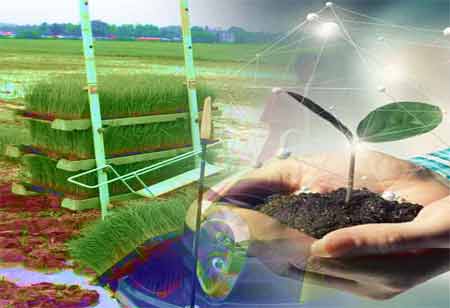Thank you for Subscribing to Agri Business Review Weekly Brief
The Impact of Technological Advances in Irrigation Techniques
Concerns about climate change have spread throughout many populations and geographic areas.

By
Agri Business Review | Thursday, February 29, 2024
Stay ahead of the industry with exclusive feature stories on the top companies, expert insights and the latest news delivered straight to your inbox. Subscribe today.
Technological advances in irrigation techniques have revolutionized how irrigation is managed, allowing for more efficient and cost-effective irrigation solutions for various applications. This article examines the role of technological advances in irrigation techniques.
Fremont, CA: Concerns about climate change have spread throughout many populations and geographic areas. It has caused temperature increases, arid zone expansion, glacier loss, and alterations in biological patterns. One of the many important areas that these changes significantly impact is agriculture.
Climate change and global warming have caused changes in the soil-water nexus, which hurts crop quality and necessitates more external intervention in fertilizers and other crop aids. These changes have also resulted in changes in the soil ecosystem, including the biome.
This feeds a vicious cycle by further upsetting the balance of the soil ecology. Drought-prone areas and regions that depend on seasonal rainfall for agricultural activity are more affected by the scenario, which can result in crop failure and financial losses. It's critical to implement farming systems that can tolerate variations in temperature, water, and cold, among other factors, because of the growing shifts in weather patterns.
Agricultural Irrigation Methods
Farmers can lessen some of the problems brought on by water scarcity by using efficient irrigation systems, especially in areas prone to drought and with perennial crops. The kind of soil, the crop, the availability of water, and the accessibility of other resources are some elements that affect the selection of one of the methods.
It's common knowledge that droughts have impacted grape quality and output in wine-producing regions of Europe and the United States, leading to water management techniques that can guarantee quality, yield, and vine preservation. Techniques for irrigation have been crucial in this regard. Drip irrigation is a commonly used developing irrigation technology that European vine producers are implementing.
Firmly Established Drip Irrigation
It has advanced significantly since drip irrigation was first used in Israel in the 1950s and 1960s. Drip irrigation is so popular because it can aid in consistent water distribution, which is particularly important in vineyards. Vine producers employ soil sensors and automated systems to enhance their water management techniques, augmenting drip irrigation's efficacy.
Subsurface drip irrigation techniques, developed via research from universities like Washington State University, can help mitigate the problems associated with long-term drip irrigation use, such as soil clogging and pest-related damage to irrigation lines. Subsurface drip irrigation has been shown in studies and pilot programs to enhance physiological activity without sacrificing grape quality.
Research has also demonstrated deficit irrigation's efficacy in drought-prone regions to stabilize output during growth stages. A variation of deficit irrigation, called partial root-zone irrigation, is presently under investigation for its potential to mitigate drought-related stress in vines while enhancing yield.
Another benefit is this method's ability to be combined with other irrigation strategies, such as drip irrigation, to increase crop water productivity and grape quality. Success stories have come from controlling deficit irrigation, preserving the soil moisture threshold, and continuously monitoring methods to alter strategies to maintain yield and vines.
Do Irrigation Techniques by Themselves Guarantee Crop Productivity?
It is recognized that irrigation practices alone cannot guarantee agricultural output, even with the benefits of utilizing sophisticated irrigation methods.
A comprehensive strategy that encompasses training farmers on policies mitigating climate change-related issues, introducing novel technology, and conducting recurring experiments to revise and adjust methods as required can optimize productivity and attain economies of scale.





